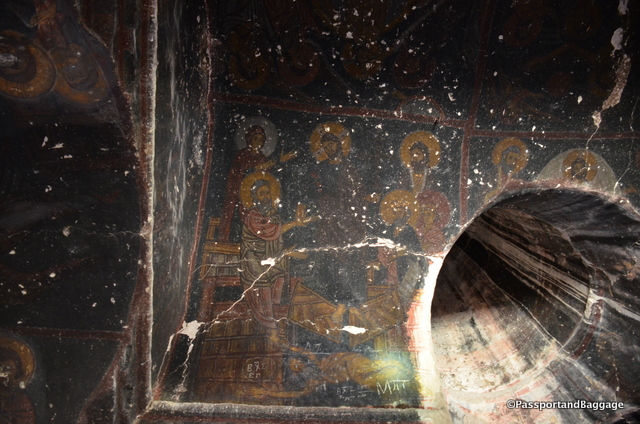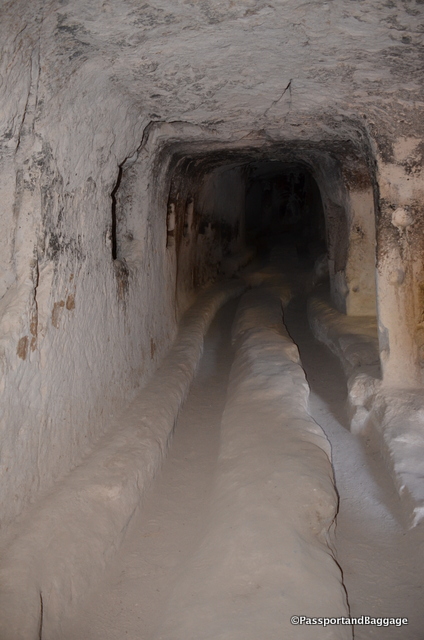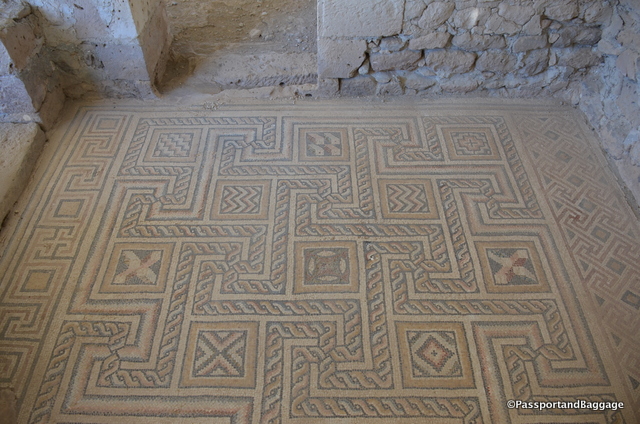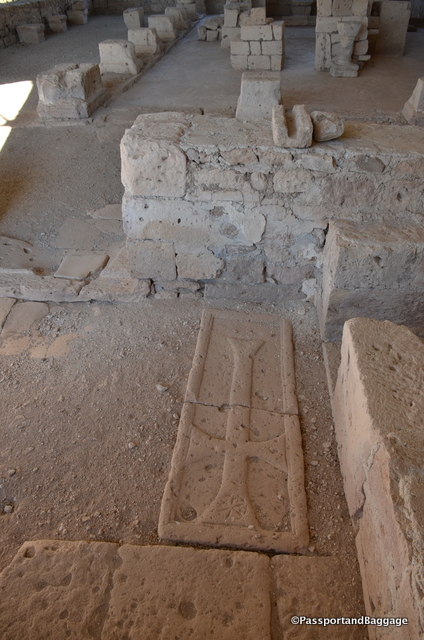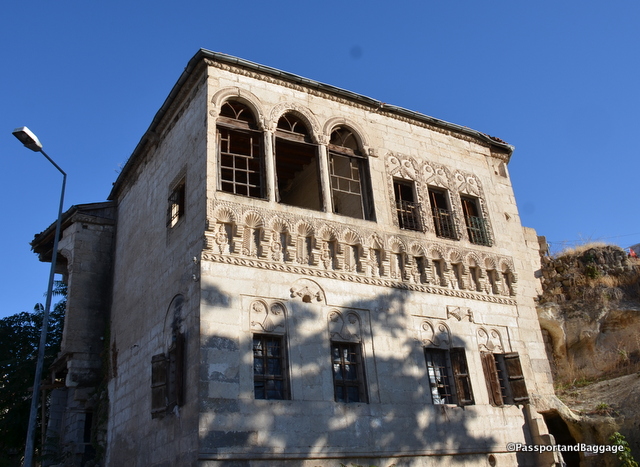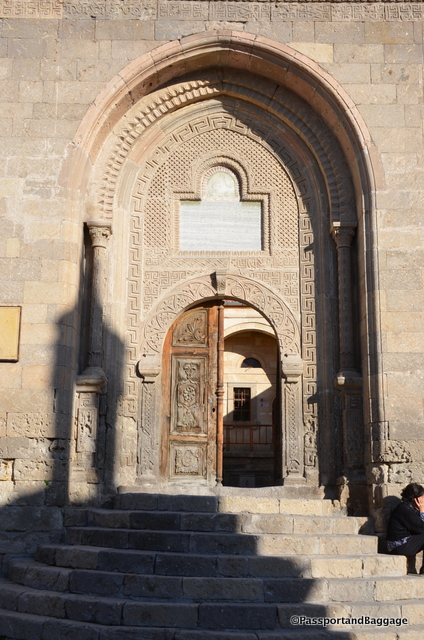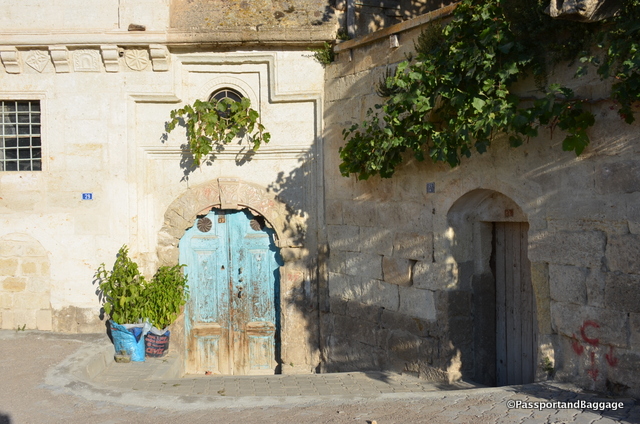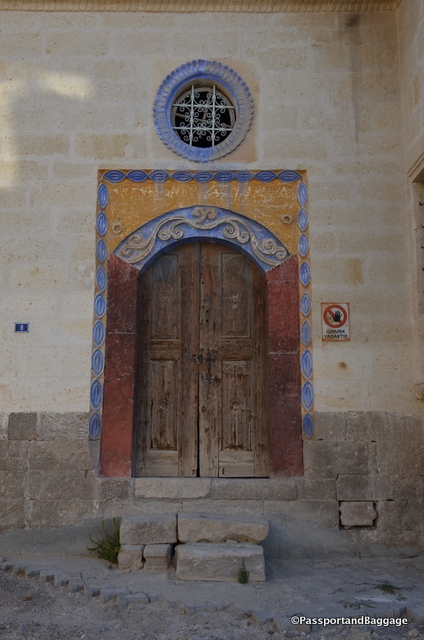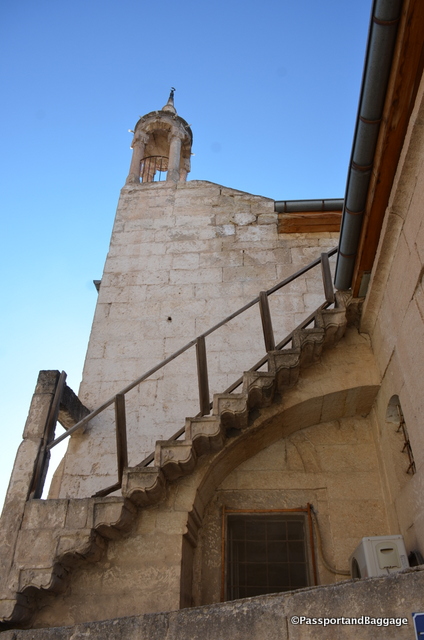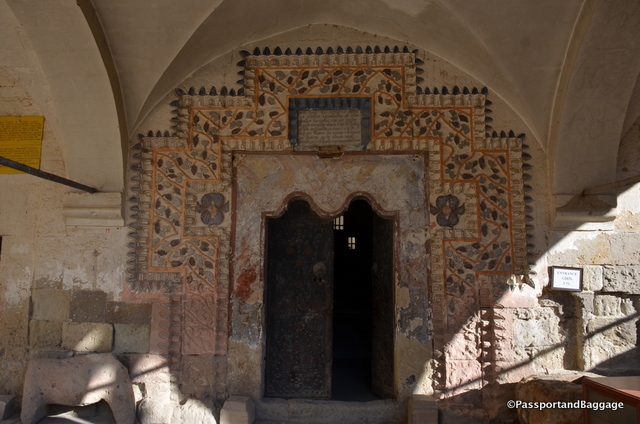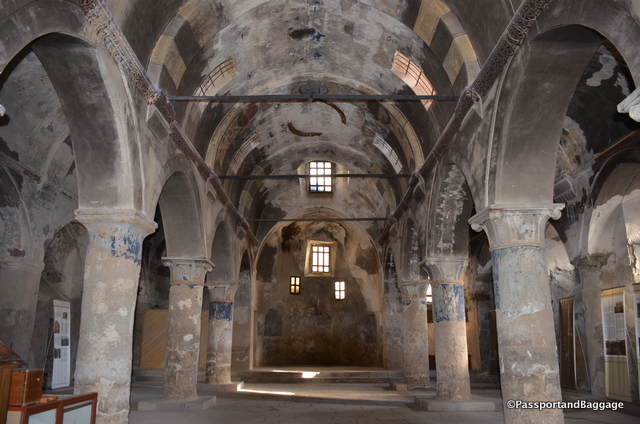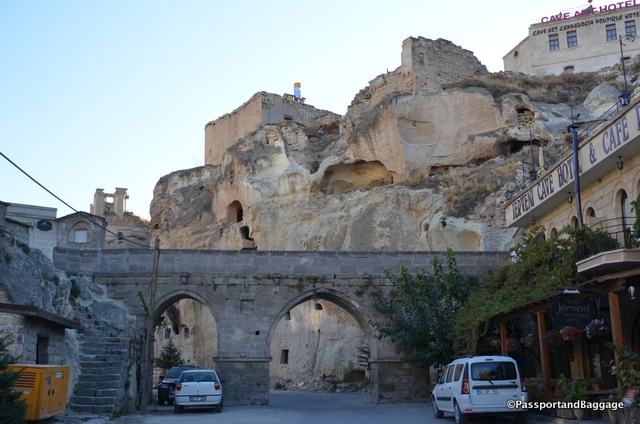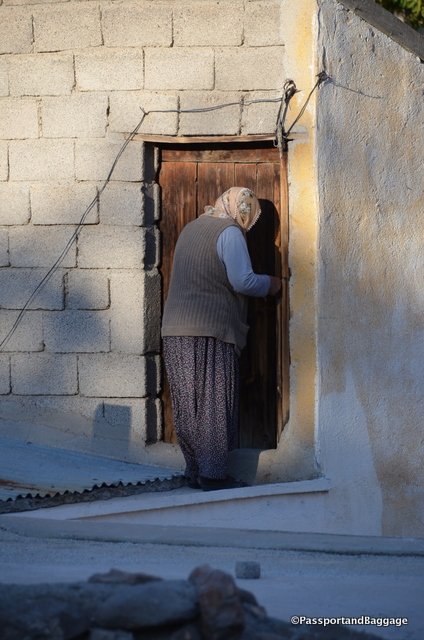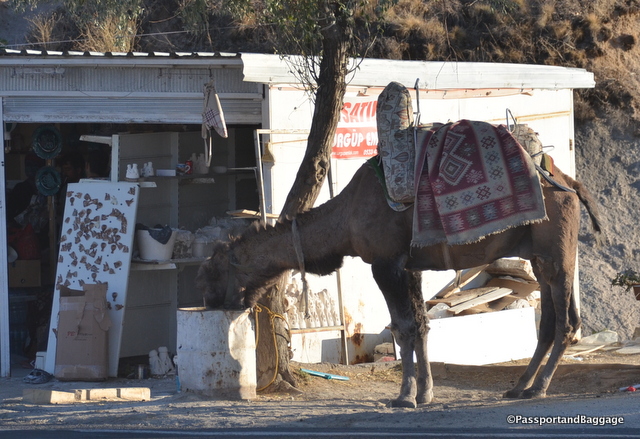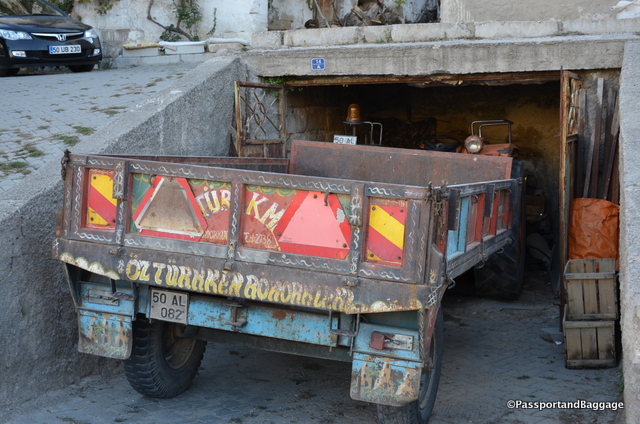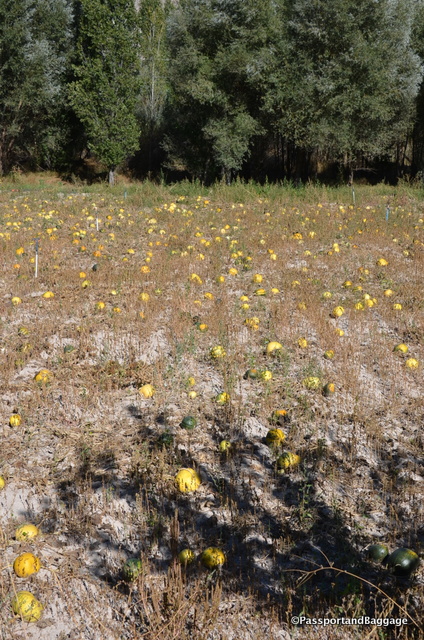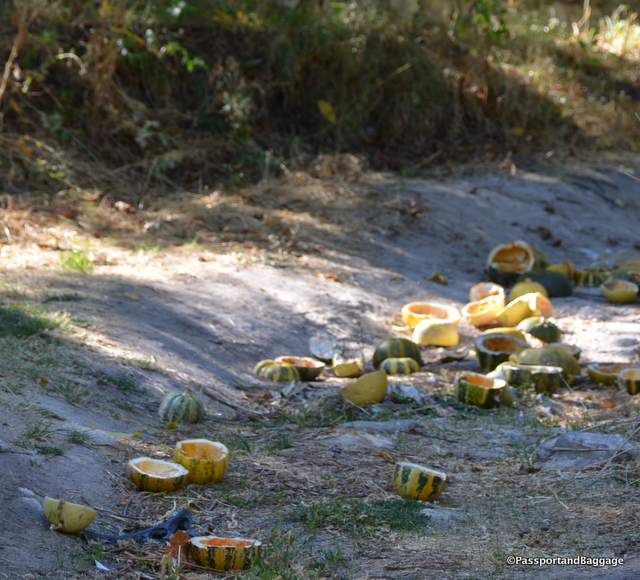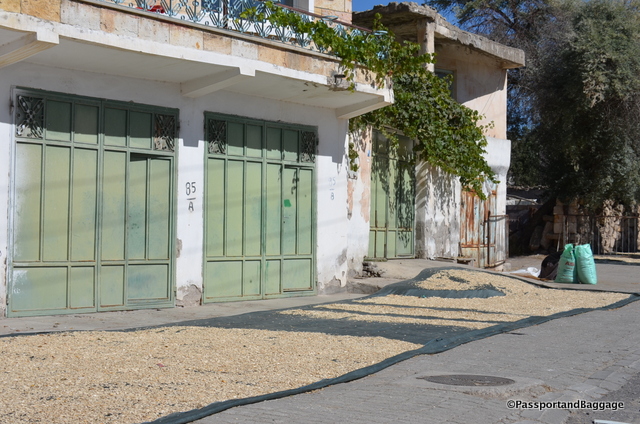September 29, 2016
The Keslik Monastery sits just on the outskirts of Taşkinpasa. The Monastery held about 250 people and had two cave churches. The first one is Archangelos church and the other one Saint Stefanos church.
There are wonderful frescoes in the Archangelos church, but they are so badly covered with soot that you need the resident guide and his flashlight to see them.
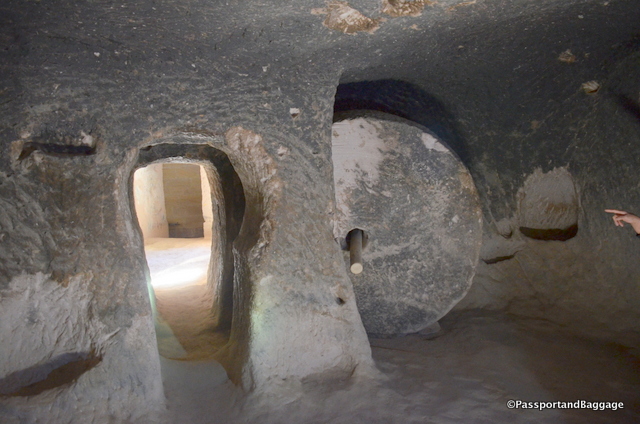 Due to many robbers and military conflicts in the region, the monks had a safe room and when they were in need, they could close the door by a big and heavy millstone and escape in a tunnel under the monastery and garden. As these stones are hard to find, this is an excellent chance to see one in-situ.
Due to many robbers and military conflicts in the region, the monks had a safe room and when they were in need, they could close the door by a big and heavy millstone and escape in a tunnel under the monastery and garden. As these stones are hard to find, this is an excellent chance to see one in-situ.
Not far from Taşkinpasa is Sobessos, the only late-Roman/early-Byzantine settlement in Cappadocia. Originally a Roman settlement from the 4th century to 5th century A.D., it was discovered by chance in 1963 by a farmer clearing a field.
He reported his discovery to the local museum, but they ignored him. It was not until 2002 that the museum took action and started excavations that are still going on.
A corrugated-iron roof protects the 4000 square foot meeting hall, the main attraction of which is the mosaic flooring. In a later time a chapel had been built on top of some of the finer mosaics inside the meeting hall. According to the coin that was found during the excavation, the chapel dates back to the middle of the 6th century.
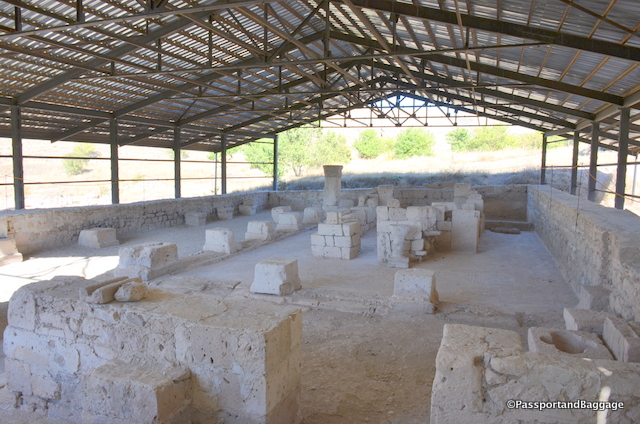 A grave was found in the north part of the main room and belongs to the same period as the chapel.
A grave was found in the north part of the main room and belongs to the same period as the chapel.
Further excavation uncovered the bath complex that you find at the entry, as well as an apoditorium (dressing room) and a caldorium (steam room).
Wandering the ruins makes you realize how little is understood, or known about the development of Cappadocia. It is known that Christians were hiding out from Roman soldiers, but there has never been any evidence of a full-scale Roman settlement in the area. One leaves this site with more questions than answers.
Our last stop of the day was Mustafapaşa. It is difficult to discuss Mustafapasha without at least touching on the horrendous political policies taken on by the Turkish government at the beginning of the Republic’s formation.
The former name of Mustafapaşa during the Ottoman Empire era was Sinasos. It had a mixed population. Greeks and Karamanlides (Turkish speaking Christians) constituted the majority of the population and Muslim Turks constituted the rest. The small town had many elaborate houses built by the wealth coming from İstanbul.
This Greek portion of this town was devastated during the 1923 Population Exchange and the town has never economically recovered.
The 1923 population exchange between Greece and Turkey stemmed from the “Convention Concerning the Exchange of Greek and Turkish Populations” signed at Lausanne, Switzerland, on January 30, 1923, by the governments of Greece and Turkey. It involved approximately 2 million people (around 1.3 million Anatolian (Turkish) Greeks and 500,000 Muslims in Greece), most of whom were forcibly made refugees and de fact denaturalized from their homelands.
By the end of 1922, the vast majority of native Asia Minor Greeks had fled the recent Greek genocide (1914–1922) and Greece’s later defeat in the Greco-Turkish War (1919–1922). The Greek genocide, part of which is known as the Pontic genocide, was the systematic genocide of the Christian Ottoman Greek population from its historic homeland in Anatolia (Turkey) during World War I and its aftermath (1914–22).
According to some calculations, around 900,000 Greeks had arrived in Greece. The population exchange was envisioned by Turkey as a way to formalize, and make permanent, the exodus of Greeks from Turkey, while initiating a new exodus of a smaller number of Muslims from Greece, to supply settlers for the newly depopulated regions of Turkey. Greece saw it as a way to supply its masses of new property-less Greek refugees from Turkey with lands to settle from the exchanged Muslims of Greece.
This major compulsory population exchange, or agreed mutual expulsion, was based not on language or ethnicity, but upon religious identity, and involved nearly all the Orthodox Christian citizens of Turkey, including its native Turkish-speaking Orthodox citizens, and most of the Muslim citizens of Greece, including its native Greek-speaking Muslim citizens.
More street scenes of Mustafapaşa:
It is pumpkin harvest time in Turkey. The Turks only raise the pumpkins for their seeds, the rest is set along the roads or tossed in the fields for animals, or, as far as I could see, simply tossed out.
Cappadocia and Central Anatolia are both so large and full of history and civilizations stacked upon each other, it is very hard to grasp a good picture of what actually took place when it history. The area is a large farming area and the terrain takes your breath away each and every time you see it.
